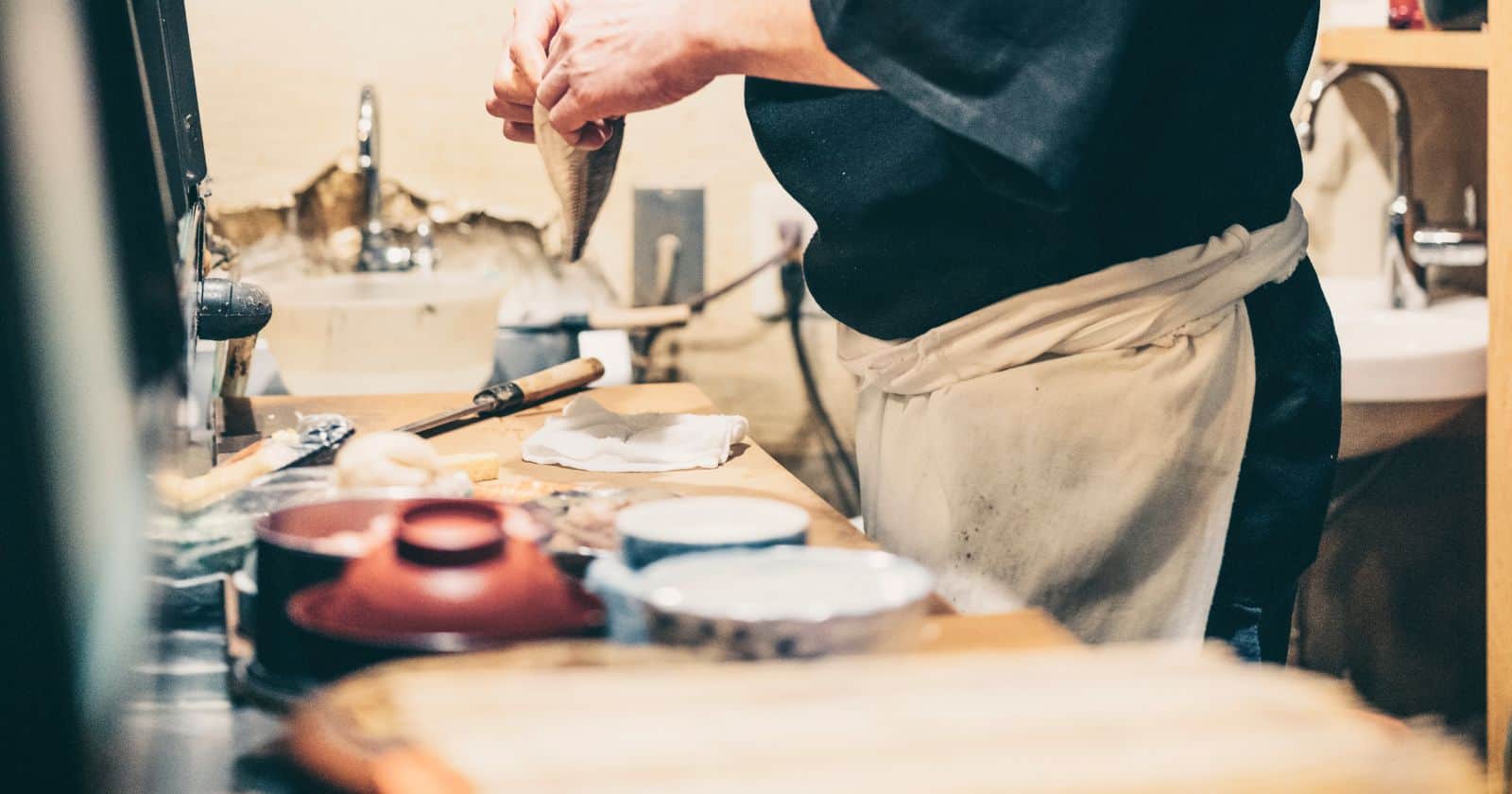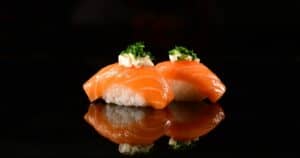Sushi has skyrocketed from exotic oddity to mainstream American favorite, but when did this Japanese delicacy first captivate US tastebuds? While a few pioneering sushi bars dotted the States in the 1950s, sushi didn’t gain widespread appeal until the mid-1960s.
The scene was set in Los Angeles, where Japanese businessman Noritoshi Kanai opened the seminal Kawafuku Restaurant in 1966. His traditional nigiri sushi wowed local Japanese patrons, who then exposed American colleagues to the wonders of fresh fish and rice. Sushi’s cool factor quickly spread from LA across the nation. By the late 60s, sushi restaurants were popping up in every happening city.
Fast forward to today, where there are over 4,000 sushi spots satisfying America’s endless appetite for artful morsels of seafood and rice. Let’s dive in to trace sushi’s tantalizing rise from odd niche to American staple.
The Earliest Days: Sushi’s Steady Start (1950s-1960s)
Contrary to popular belief, sushi is not a centuries-old Japanese tradition. Sushi as we know it today – raw fish atop vinegar-seasoned rice – originated in the 19th century Tokyo fish markets. The traditional sushi culture took hold in Japan before eventually making its way to America.
The first sushi restaurants in the US popped up in Little Tokyo, Los Angeles during the 1950s. Kawafuku Restaurant became the pioneer when owner Noritoshi Kanai and his Jewish business partner Harry Wolff opened its doors in 1966. The tiny sushi bar mainly catered to Japanese businessmen, serving traditional nigiri sushi with raw fish over pressed rice.
These expat regulars then introduced their American coworkers to the delights of sushi. Over the next few years, Kawafuku’s reputation spread by word-of-mouth. Sushi was quickly becoming a trendy, must-try local phenomenon in LA.
Sushi Fever Hits the West Coast (Late 1960s)
In the late 1960s, sushi had its breakout moment in California. Early adopters and thrill-seeking foodies lined up at sushi bars popping up from San Diego to San Francisco. In 1967, a magazine writer described sushi as “the great conversation piece at any cocktail party.”
By the early 1970s, over 100 sushi spots had opened in the Golden State. Celebrity fans like Joan Baez and Led Zeppelin helped fuel sushi’s cool cred. California rolls loaded with avocado and crab meat also made sushi more accessible and palatable to American tastes.
On the East Coast, sushi was slower to take hold. Only a handful of restaurants like Hatsuhana in New York served traditional nigiri and maki to open-minded customers. Sushi remained a Californian sensation throughout the 60s and 70s.
Sushi Sweeps the Nation (1980s and Beyond)
By the 1980s, sushi was no longer only a California thing. Sushi restaurants expanded rapidly across the country thanks to health-conscious diners and Japanophiles. The growing popularity of Japanese cuisine helped remove sushi’s stigma. No longer seen as frightening or weird, sushi was now adventurous, exotic and chic.
Innovative American-style rolls also helped spark mass appeal. The Philadelphia roll with salmon, cream cheese, and cucumber made sushi more accessible to newcomers. The 1980s saw sushi sales triple as it became a staple happy hour snack for urbanites nationwide.
In the 1990s and 2000s, the sushi boom reached fever pitch. The number of sushi restaurants doubled as American consumption skyrocketed. Grocery stores also began carrying pre-made and frozen sushi, introducing new customers to its pleasures.
Today, there are over 4,000 sushi restaurants across the US. Sushi has secured its place alongside burgers, tacos, and pizza as one of America’s favorite foods. From urban centers to small towns, satisfying our sushi fix is always just a quick visit away.
Why Did Sushi Succeed? Keys to Winning America’s Heart
Sushi overcame the odds to win over skeptical American palates. Here are some factors that contributed to its eventual popularity triumph:
Health Halo
- As American diners became more concerned with nutrition in the 1960s and 70s, sushi’s image as a fresh, light cuisine helped its appeal. The rise of Japanese and Asian-inspired wellness trends also brought sushi into vogue.
Athletic Admiration
- Sushi gained fame amongst athletes and bodybuilders for its high-protein, low-fat qualities. Muhammad Ali, in particular, helped popularize sushi by chowing it before fights.
Celeb Cred
- As stars like the Beach Boys and John Lennon were photographed eating sushi in LA, it attained Hollywood glamour and hipness by association.
Adventurous Eaters
- Daring foodies and restaurant critics helped introduce sushi to the mainstream. Their reviews lent culinary credibility to counter perceptions of sushi as bizarre or gross.
Gradual Familiarity
- Over time, sushi became less exotic and intimidating as more Americans tried California rolls and staple items. Generational interest from Millennials and Gen Z also boosted sushi’s popularity.
The Sushi Pioneers Who Started It All
While sushi now belongs to all of America, we owe its early success to a handful of intrepid chefs and entrepreneurs in LA:
Noritoshi Kanai & Harry Wolff
- Kawafuku Restaurant founder Noritoshi Kanai teamed with Jewish businessman Harry Wolff to open America’s first nigiri sushi bar in 1966.
Shigeo Suga
- Along with Kanai, Shigeo Suga was one of the original chefs serving traditional edomae-style nigiri sushi in America at Kawafuku.
Ichiro Mashita
- Mashita opened one of the first sushi omakase restaurants in 1970, known as Tokyo Kaikan. It introduced elite locals to the rituals of high-end sushi dining.
Teruo Imaizumi
- Former Kawafuku chef Imaizumi launched the popular Ima restaurant in 1972, sharing traditional sushi with his adopted home of Los Angeles.
Thanks to these pioneers, sushi is now one of America’s most beloved and ubiquitous foods. We’ve come a long way from the days of wary first-timers and fishphobia!
The Future of Sushi: What’s Next for America’s Obsession
Sushi has undoubtedly secured its place in American cuisine and culture. Where will it go in the decades ahead?
- More sustainability, with a focus on responsibly-sourced fish and eco-friendly operations.
- Regional hybrid rolls tailor-made to local tastes outside Japan and California.
- Handrolls, omakase, and fast-casual sushi outlets for accessible, high-quality fare.
- Artisanal sushi featuring chef-driven reinventions and premium ingredients.
- Continuing creativity and American innovation to make sushi ever more irresistible!
The sushi show has no signs of stopping. America’s love affair with those sublime morsels of seafood, rice, and nori is still going strong. Here’s to the visionaries who brought sushi into our lives – they opened our minds, palates, and horizons.




